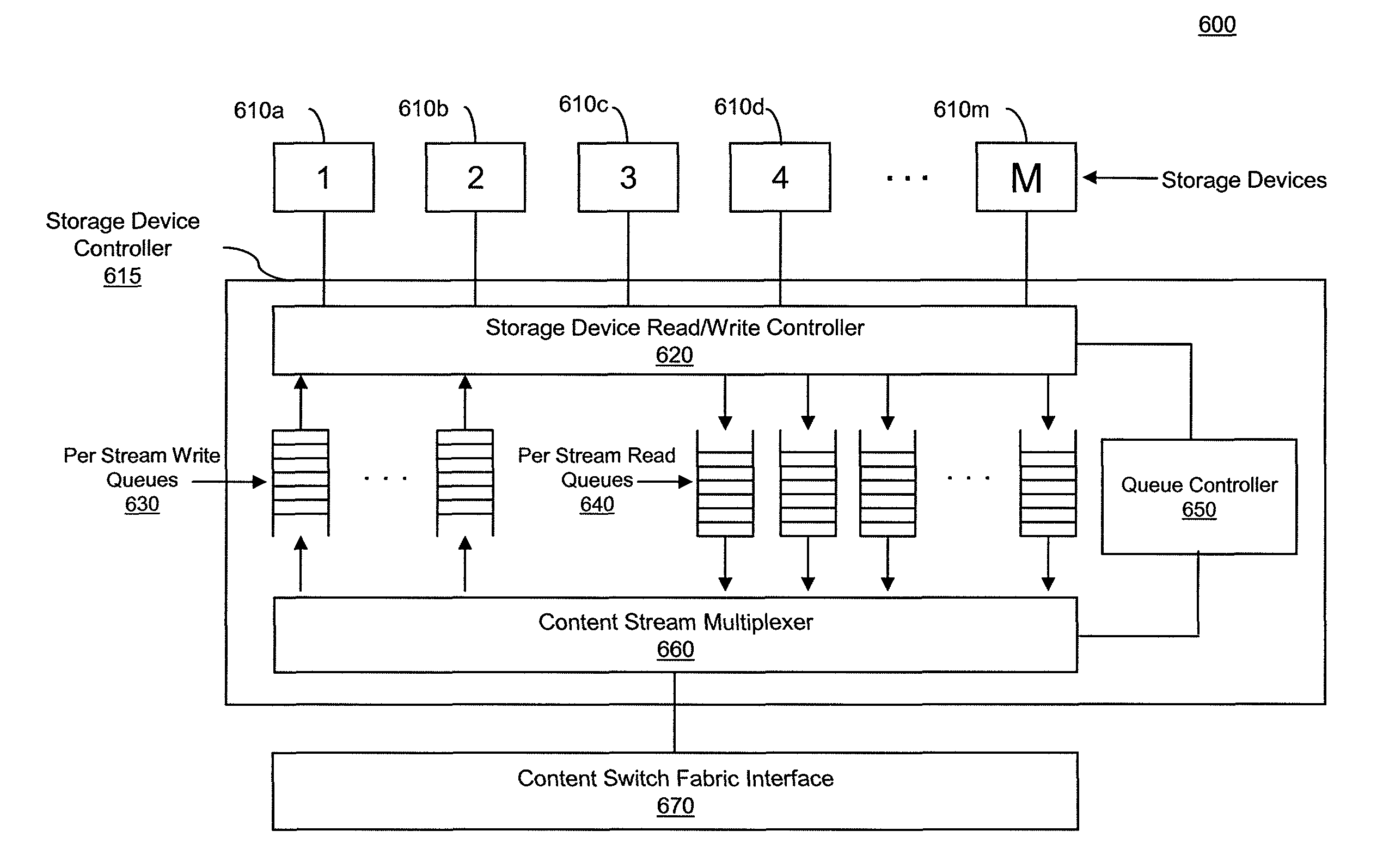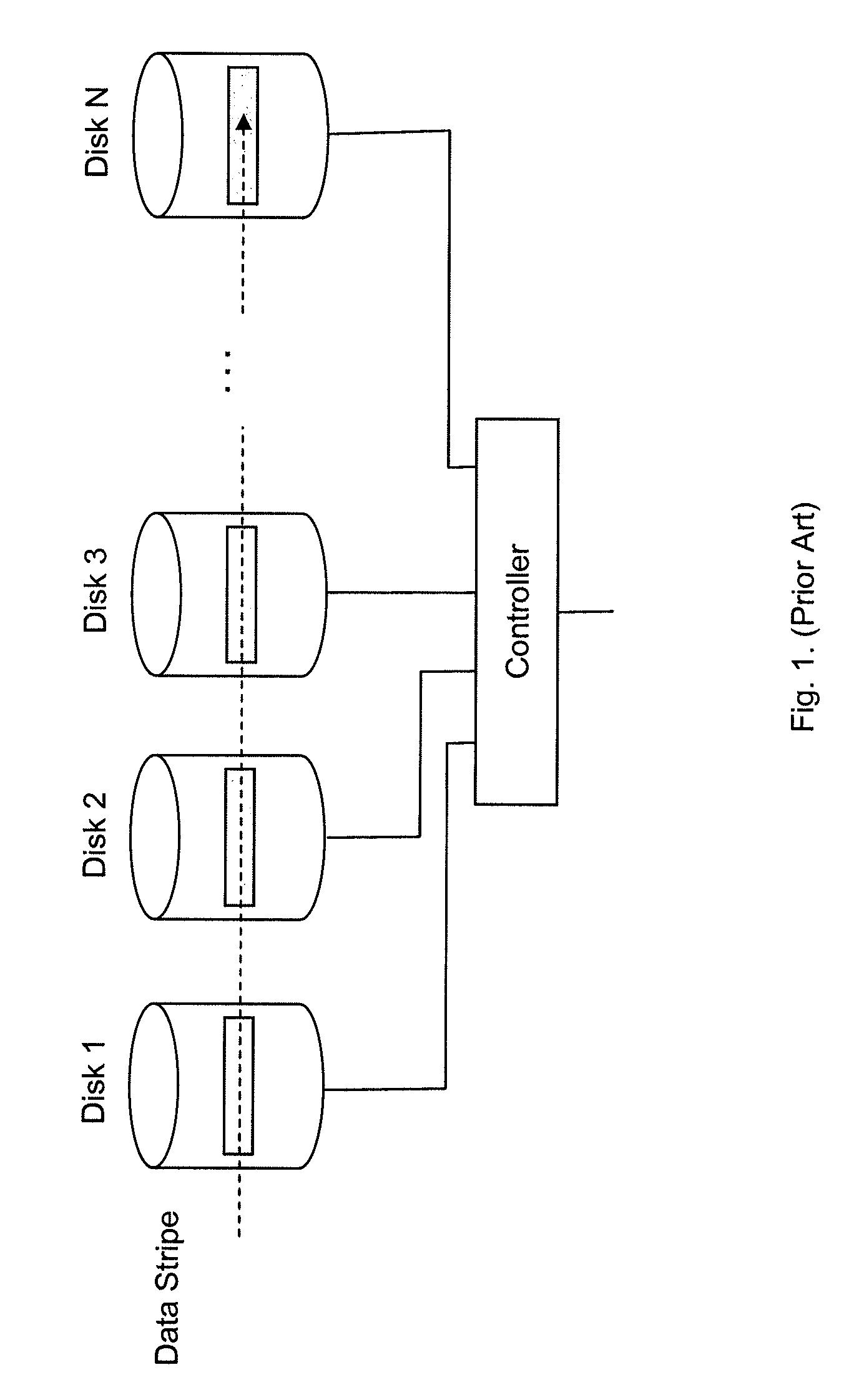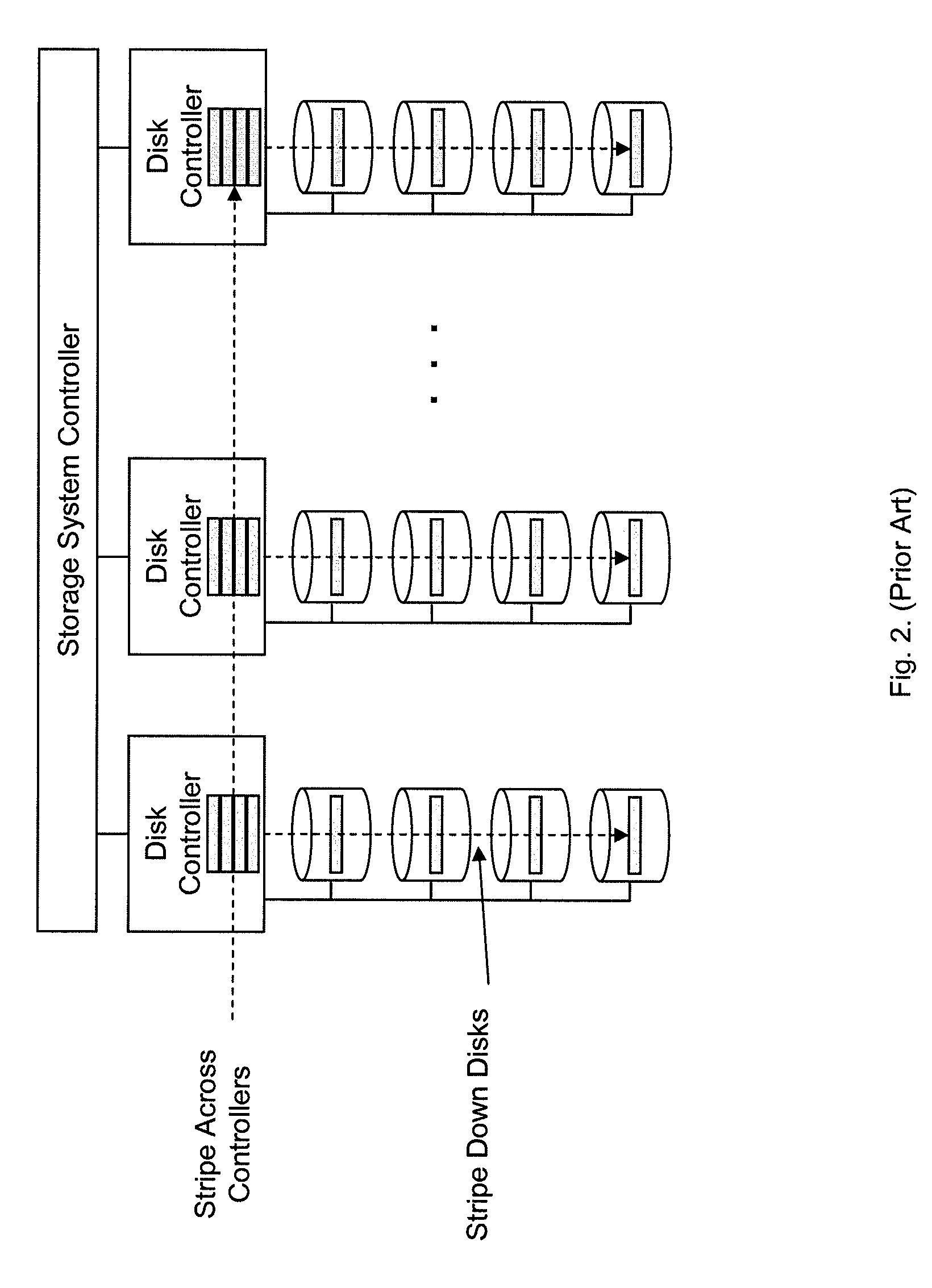Asynchronous and distributed storage of data
a data and asynchronous technology, applied in the field of computer-based methods and apparatuses, can solve the problems of limited data storage capacity, limited writing and reading information bandwidth, and limited raid size, so as to reduce the large streaming buffer, increase the latency of striped systems, and reduce the effect of large buffer siz
- Summary
- Abstract
- Description
- Claims
- Application Information
AI Technical Summary
Benefits of technology
Problems solved by technology
Method used
Image
Examples
Embodiment Construction
[0069]In general overview, a subscriber requests multimedia content (e.g., video and audio program, audio program) from his / her set top box which is connected to the subscriber's television. The set top box communicates with a delivery module located, for example, at a cable headend. The delivery module requests parts of a data file, which includes the requested multimedia content, from a plurality of storage modules. Each storage module retrieves the requested parts, which are typically stored on a plurality of storage devices at each storage module. Each storage module determines independently when to retrieve the requested parts of the data file from storage and transmits those parts from storage to a data queue. Based on a capacity of the delivery module and / or the data rate associated with the subscriber request, each storage module transmits the parts of the data file to the delivery module. The delivery module generates a sequenced data segment from the parts of the data file...
PUM
 Login to View More
Login to View More Abstract
Description
Claims
Application Information
 Login to View More
Login to View More - R&D
- Intellectual Property
- Life Sciences
- Materials
- Tech Scout
- Unparalleled Data Quality
- Higher Quality Content
- 60% Fewer Hallucinations
Browse by: Latest US Patents, China's latest patents, Technical Efficacy Thesaurus, Application Domain, Technology Topic, Popular Technical Reports.
© 2025 PatSnap. All rights reserved.Legal|Privacy policy|Modern Slavery Act Transparency Statement|Sitemap|About US| Contact US: help@patsnap.com



